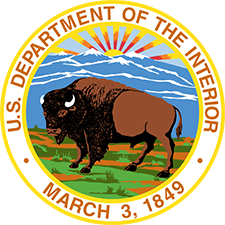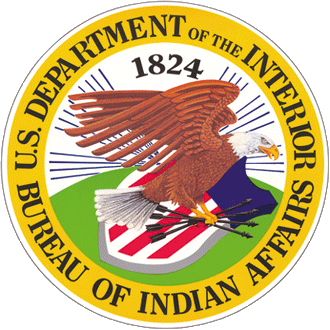Hand crews, teams of on-the-ground firefighters, form a vital part of the Bureau of Indian Affairs (BIA) Division of Wildland Fire Management (DWFM) response, and often work on the front lines of a wildfire.
The DWFM currently provides funding, support, policy and training for seven Type 1 hand crews across Indian Country.
What Are Hand Crews?
Hand crews are teams of 18-25 firefighters that respond to fire incidents by working and camping near the front lines of active wildfires, often hiking long distances and carrying their own gear to reach remote areas. They carry out vital on-the-ground fire response measures while coordinating closely with firefighting aircraft and engine crews.
There are four types of hand crews: Type 1 (Interagency Hotshot Crew), Type 2 with Initial Attack Capability (T2IA), Type 2 and Fire Suppression Module.
Hand crews specialize in using hand tools such as shovels, chainsaws, axes, pumps, water hoses, and drip torches. They use these tools to create firelines, which are strips of land cleared of burnable material along a wildfire’s perimeter, and to carry out firing operations, the controlled burning of vegetation ahead of a wildfire to limit the wildfire's ability to spread.
Once underway, hand crews strengthen these initial containment measures during the mop-up phase of wildland fire management by digging trenches, removing nearby vegetative fuel, and thoroughly extinguishing embers.
Outside of active wildland fire response, hand crews may also work on prescribed burns, rehabilitate burned areas, engage in fire reconnaissance, and assist in other emergency response situations.
Interagency Hotshot Crews
Interagency Hotshot Crews (IHCs) are hand crews that work in teams of 18-25 firefighters. Unlike other hand crews, they stay together as a team throughout the fire season. IHCs have more stringent requirements for fitness level, firefighting experience, and skill and leadership qualifications than Type 2 and Type 2 Initial Attack hand crews. This makes them qualified to respond to high complexity Type 1 fires. BIA-managed IHCs are national resources intended to respond to fires at the national priority level.
Learn more on the Interagency Hotshot Crews page.
Type 2 Initial Attack Hand Crews
A Type 2 Initial Attack (T2IA) hand crew consists of 18-20 firefighters. As a crew, they are capable of initial attack, and of breaking up into squads in order to meet multiple objectives at the same time. They are often the first on the scene responsible for constructing a fireline, which is a containment or control line that is scraped or dug to mineral soil to prevent a wildfire from growing or passing. Type 2 hand crews are qualified to respond to Type 2 wildfire incidents in addition to lower complexity wildfires.
Type 2 Hand Crews
Type 2 hand crews consist of 18-20 firefighters who are qualified to perform lower complexity fire suppression operations such as holding fire line, constructing indirect fire line, mop up, fireline rehabilitation, back haul of equipment and other less complex missions.
Fire Suppression Module
A fire suppression module is a hand crew of 5-17 fire fighters that are capable of performing lower complexity fire suppression operations, or are higher level crews that are missing overhead or do not meet the number of personnel required for Type 1, Type 2 IA, or Type 2 standards for crew configurations.
Additional Information
Related Pages
- Wildfire Response
- National Aviation Office
- Interagency Hotshot Crews
- PDF: Red Book "Chapter 13: Firefighter Training and Qualifications"
- PDF: Wildfire Complexity Analysis
- National Interagency Fire Center
- National Wildfire Coordinating Group
- Bureau of Indian Affairs’ Fire Management Training and Qualifications page
Contact Us
Boise, ID 83705


